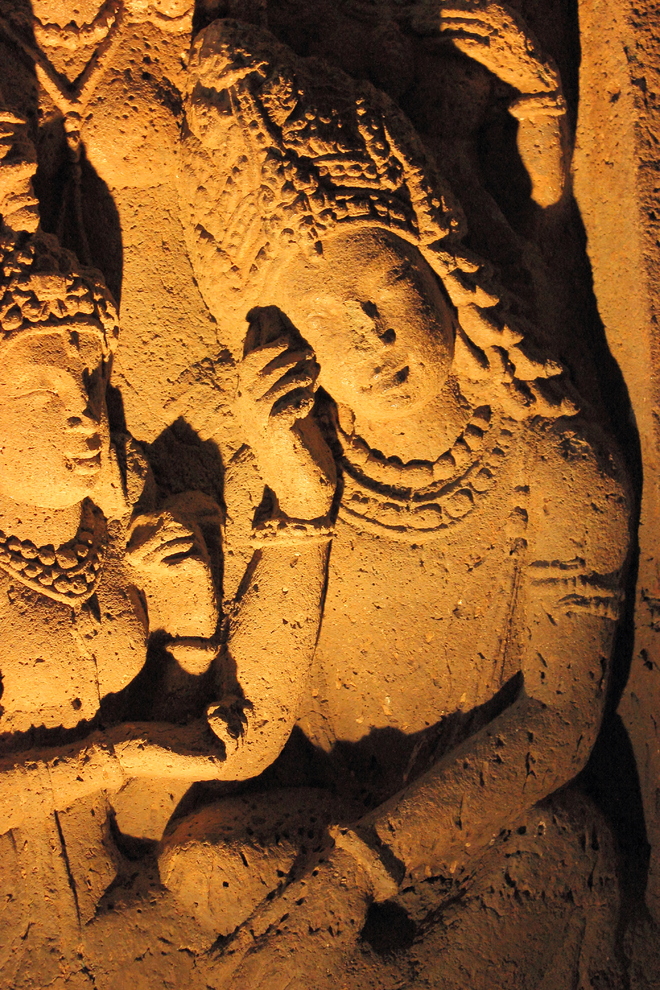Decoding the sutras of love book
M Rajivlochan
This small, but costly, book by Wendy Doniger is very entertaining, not very informative and with lots of forced historical interconnections that may or may not have matched the reality on the ground. That last part remains a major problem with all those who, like Doniger, try to tackle themes of Indian history only on the basis of textual references with no consideration for other sources of history like archaeology, numismatics and epigraphs. Add to that a rather confused exposure to folkloric themes from Indian mythologies and the historian is well on the way to re-writing history in a most subjective manner, non-falsifiable and unscientific.
The book is divided into seven chapters. The first three attempt to locate the Kamasutra within the corpus of coeval Sanskrit literature. The Kamasutra was written for a person who was well-off, confident and had a lot of free time. Doniger says, that one of the most important characteristics of the Kamasutra was that it was so openly neutral to caste, religion and sundry other social boundaries. This then, she says, was the ‘Indian way’. That idea of the ‘Indian way’ is in the next chapter anchored onto Kautliya and his Arthashastra. The tricks of love, the confusions and the conflicts in pursuing sexual pleasure remind Doniger of the skullduggery advocated in the Arthashastra. From this, she goes on to insist a connection between the two texts, each learning from the other.
Given the constant emendations that Indian texts went through over the time, with little consideration for retaining the original versions, this may or may not have been the case. After all, the same kind of scheming, trickery and sharp practices in matters sexual are evident in Europe too, right up till recent times. That does not mean that the people of Europe were taking lessons from the Arthashastra on how to get a bit of sex from someone without annoying some others. Perhaps the predominance of the wham-bam-thank-you -ma’am practice of liberated sex, that may not need any lessons in chicanery, subterfuge and dissimulation, may have been a rather recent phenomena, more to do with the coming into existence of the liberated equal status of woman in America than anything else.
The next three chapters isolate themes from the Kamasutra with the objective of drawing attention to the Kamasutra way of challenging the conventions of the time. That is another matter that she really does not tell us anything about what the ‘convention’ might have been or whether the Kamasutra was criticised in some other texts that might have been the upholders of these so-called conventions. If the Kamasutra, its prescriptions and advices did not attract any approbation then surely no one (other than Doniger) thought that it was challenging anyone or anything. If at all, as Doniger herself points out, the Kamasutra was taken as an approved text for numerous commentaries that were created in subsequent centuries.
The problem of course is her presumption that there were ‘conventions’. The only thing certain that can be gleaned from the text-based history of India for ancient times is that it was a small-scale society where multiple ways of living life co-existed with each other, without treading on each other’s toes.
A commentary such as Doniger makes on the Kamasutra would be of little value unless it devoted at least some space to discussing female sexuality. After all, that is often the voyeuristic USP of most such books: To tell people of the sexual desires and deeds of women. So there is a whole chapter devoted to how women did it, with whom all and in what different ways.
Doniger does notice that Indians were quite aware of the different orgasmic requirements of men and women much before the Europeans discovered things like the G-spot and female orgasms. Moreover, there is nothing in Doniger’s descriptions that says that women in India were sexually unfulfilled. We would suggest that quite contrary to the spin that Doniger tries to give to the Kamasutra, it was not a text advocating liberation or suggesting paths of liberation. Rather, it was just another text describing the practices extant during the times that it was written in. Later commentators, as Doniger’s last chapter suggests, merely updated the text to include the newer practices as and when these became popular.
Unlock Exclusive Insights with The Tribune Premium
Take your experience further with Premium access.
Thought-provoking Opinions, Expert Analysis, In-depth Insights and other Member Only Benefits
Already a Member? Sign In Now










